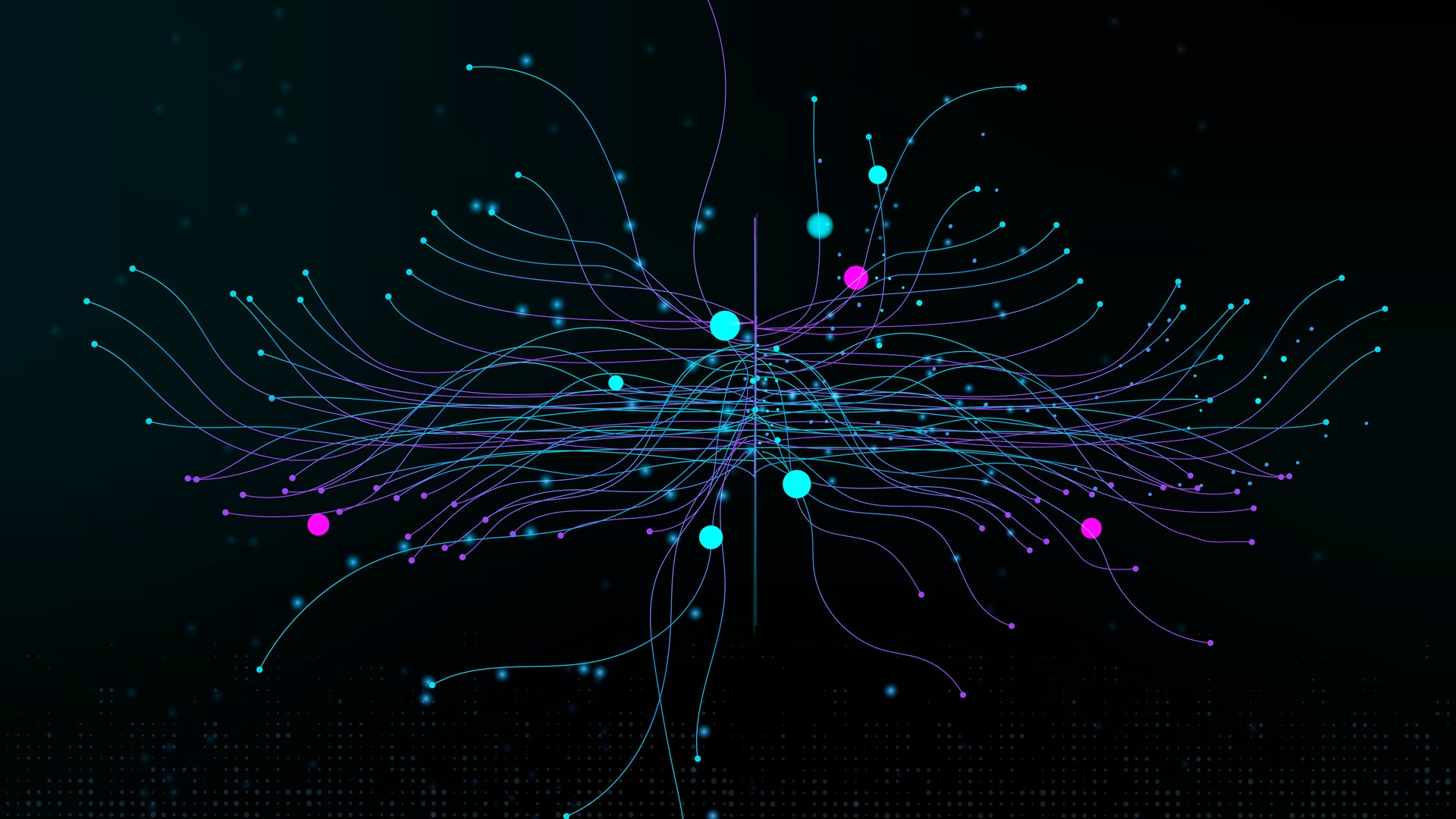Classification in machine learning involves the intriguing process of assigning labels to new data based on patterns learned from training examples. It’s like teaching a model to recognize and categorize objects, but how does it actually work?
Machine learning models have already started to take up a lot of space in our lives, even if we are not consciously aware of it. You want an example: ChatGPT, Alexa, autonomous vehicles and many more on the way. Embracing AI systems and technology day by day, humanity is experiencing perhaps the fastest development in recent years.
But is the force behind this development completely random? Of course not. There are many techniques used to train these complex models, such as regression, tuning and classification. Let’s take a look at classification in machine learning together.

What is classification in machine learning?
Classification in machine learning is the process of assigning predefined class labels to new, unseen data based on the patterns and relationships learned from the training data. The goal is to create a model that can accurately predict the class label of a new input, given its features. The classification model learns from the training data, identifying the distinguishing characteristics between each class, enabling it to make informed predictions.
Classification in machine learning can be a versatile tool with numerous applications across various industries.
Here are some examples of where classification can be used in machine learning:
Image recognition: Classification can be used to identify objects within images. For instance, a model can be trained to recognize animals, vehicles, buildings, or even facial expressions.
Natural Language Processing (NLP): Classification can be applied to text data to categorize messages, emails, or social media posts into different categories, such as spam vs. non-spam, positive vs. negative sentiment, or topic classification.
Predictive Maintenance: Classification can be used to predict when equipment or machinery is likely to fail, allowing for proactive maintenance and minimizing downtime.
Healthcare: Classification can be applied to medical data to diagnose diseases, identify potential health risks, or categorize patients based on their medical history.
Fraud Detection: Classification can be used to identify fraudulent transactions, such as credit card fraud or insurance claims fraud.
Recommendation Systems: Classification can be used to recommend products or services based on user behavior and preferences

What are the different types of classification in machine learning?
Machine learning classification is the process of assigning labels or categories to data based on common characteristics or attributes. There are several types of classification in machine learning, each with its own strengths and weaknesses.
The main types of classification in machine learning are:
- Binary classification
- Multi-class classification
- Multi-label classification
- Unsupervised learning
- Supervised learning
- Reinforcement learning
- Image classification
- Text classification
Binary classification in machine learning
Binary classification in machine learning is a type of supervised learning where the goal is to predict a binary label or class based on input features. The model is trained on a dataset that contains input-output pairs, where the output is a binary label (e.g. 0 or 1, yes or no, etc.). The model learns to distinguish between the two classes and predict the correct label for new, unseen data.
Examples of binary classification include spam vs. not spam emails, fraudulent vs. legitimate financial transactions, and disease vs. not disease medical diagnoses.
Multi-class classification in machine learning
Multi-class classification in machine learning is a type of supervised learning problem where the goal is to predict one of multiple classes or categories based on input features. In this type of problem, each instance or example belongs to one of several classes, and the task is to assign a class label to each instance.
In contrast to binary classification in machine learning, where the goal is to predict one of two classes, multi-class classification involves predicting one of three or more classes. This type of problem is more challenging because the model needs to learn more complex relationships between the input features and the multiple classes.
Multi-label classification in machine learning
Multi-label classification in machine learning is a type of supervised learning problem where the goal is to assign multiple labels or class labels to each instance or example. In contrast to traditional binary classification where the goal is to assign a single label to each instance, multi-label classification allows each instance to have multiple labels.
For example, in text classification, a piece of text can be classified as both “sports” and “politics” if it contains information related to both topics. In image classification, an image can be classified as both “dog” and “outdoor” if it contains an image of a dog taken outdoors.
Predictive uncertainty drives machine learning to its full potential
Multi-label classification in machine learning is particularly useful in situations where the classes are not mutually exclusive, and an instance can belong to multiple classes simultaneously. This type of problem is common in various domains such as text classification, image classification, and bioinformatics.
Unsupervised learning
Unsupervised learning is a type of machine learning where the algorithm tries to find patterns or relationships in the data without the use of labeled data. In other words, the algorithm is not given any information about the correct output or class labels for the input data.
The goal of unsupervised learning is to identify structures in the data, such as clusters, dimensions, or anomalies, without prior knowledge of the expected output. This can be useful for discovering hidden patterns, identifying outliers, and reducing the complexity of high-dimensional data.

Supervised learning
Supervised learning is a type of machine learning where the algorithm is trained on labeled data, meaning that the correct output or class label is already known for a given input. The goal of supervised learning is to make predictions on new, unseen data based on the patterns and relationships learned from the labeled training data.
In supervised learning, the algorithm is trained on a dataset that consists of input-output pairs, where the input is the data that the algorithm will use to make predictions, and the output is the correct class label or output value. The algorithm learns by minimizing the difference between its predictions and the actual correct outputs.
Reinforcement learning
Reinforcement Learning (RL) is a subfield of machine learning that focuses on training agents to make decisions in complex, uncertain environments. The goal of RL is to learn a policy that maps states to actions in a way that maximizes a cumulative reward signal.
In RL, the agent interacts with the environment, takes actions, and receives rewards or penalties. The goal is to learn a policy that maximizes the cumulative reward over time. RL is used in applications such as robotics, game playing, and autonomous driving.
Image classification
Image classification in machine learning is a type of application that involves training a machine learning model to classify images into different categories or classes based on their visual content. The goal of image classification is to assign a label or category to an image, such as “dog” or “car”, based on the visual features and patterns in the image.
The process of image classification in machine learning typically involves the following steps:
- Data collection: A large dataset of images is collected and labeled with the appropriate class labels
- Data preprocessing: The images are preprocessed to enhance their quality and extract relevant features
- Feature extraction: Relevant features are extracted from the images, such as color, texture, and shape
- Model training: A machine learning model, such as a convolutional neural network (CNN), is trained on the labeled dataset to learn the relationship between the image features and class labels
- Model evaluation: The trained model is evaluated on a separate test dataset to measure its performance and accuracy
- Deployment: The trained model can be deployed in a real-world application, such as image search, object detection, or facial recognition
Text classification
Text classification in machine learning is a type of application that involves training a machine learning model to classify text documents into predefined categories or classes based on their content.
The goal of text classification in machine learning is to automatically categorize text documents, such as emails, news articles, or social media posts, into relevant categories, such as “spam” or “not spam”, “positive” or “negative”, or “sports” or “politics”.
How to implement classification in machine learning
Implementing classification in machine learning involves several steps. The first step is to collect and preprocess the data. This includes cleaning the data, handling missing values, normalizing or scaling the data, and splitting the data into training and testing sets.
The second thing to do to implement classification in machine learning is to select a feature. Select the most relevant features that can help in classification. This can be done using techniques such as correlation analysis, mutual information, and recursive feature elimination.
Next, you need to select a model. Choose a suitable classification algorithm based on the type of classification problem and the data. Some popular classification algorithms include logistic regression, decision trees, random forests, support vector machines (SVMs), and neural networks.

Now for the tricky part, training the model itself. Training the model involves feeding the training data to the selected algorithm, adjusting the model’s parameters to minimize the error between the predicted output and the actual output, and iteratively refining the model until it accurately classifies the training data.
The training process typically involves the following steps:
Initialization: The model starts with a set of initial parameters.
Forward propagation: The input data is passed through the model to generate predictions.
Calculating loss: The difference between the predicted output and the actual output is calculated, and a loss function is used to measure the error.
Backpropagation: The error is propagated backwards through the model, adjusting the parameters to minimize the loss.
Optimization: The model’s parameters are updated using an optimization algorithm, such as gradient descent, to minimize the loss.
Evaluation: The model’s performance is evaluated on a validation set to monitor its progress and prevent overfitting.
Refinement: Steps 3-6 are repeated until the model accurately classifies the training data and achieves good performance on the validation set.
And last but not least, hyperparameter tuning. Hyperparameter tuning involves adjusting the model’s hyperparameters to improve its performance. Hyperparameters are parameters that are set before training the model, such as learning rate, regularization strength, and number of hidden layers.
Grid search is a common technique used for hyperparameter tuning. It involves trying out multiple combinations of hyperparameters and evaluating the model’s performance on a validation set for each combination. The combination with the best performance is then chosen as the final set of hyperparameters.
Featured image credit: kjpargeter/Freepik.
- SEO Powered Content & PR Distribution. Get Amplified Today.
- PlatoData.Network Vertical Generative Ai. Empower Yourself. Access Here.
- PlatoAiStream. Web3 Intelligence. Knowledge Amplified. Access Here.
- PlatoESG. Automotive / EVs, Carbon, CleanTech, Energy, Environment, Solar, Waste Management. Access Here.
- PlatoHealth. Biotech and Clinical Trials Intelligence. Access Here.
- ChartPrime. Elevate your Trading Game with ChartPrime. Access Here.
- BlockOffsets. Modernizing Environmental Offset Ownership. Access Here.
- Source: https://dataconomy.com/2023/08/31/classification-in-machine-learning/



